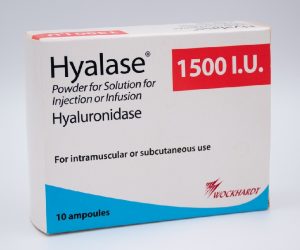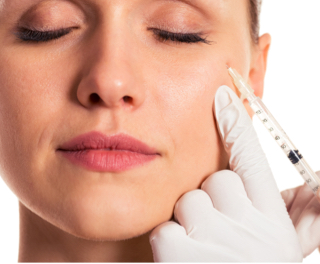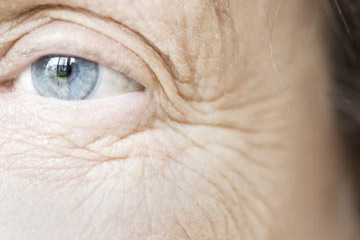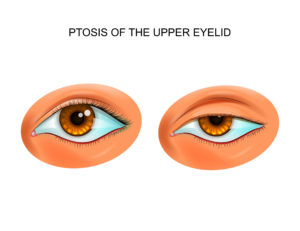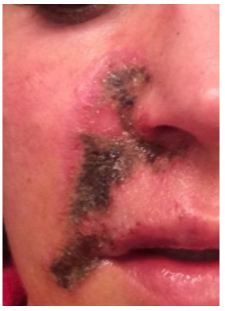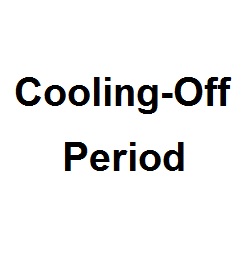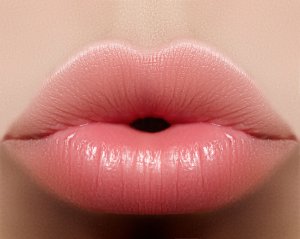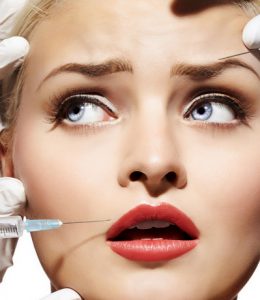Anti-wrinkle And Dermal Fillers Injection Quizz

- 1.
What is the recommended Hyalase reconstitution?
- A.
75units/1ml
- B.
150units/1ml
- C.
100units/1ml
- D.
1500units/1ml
Correct Answer
B. 150units/1mlExplanation
1ml mixed with hyalase added to 9ml saline to make a solution 150units in 1mlRate this question:
-
- 2.
Which of these is NOT a side effect of Botulinum Toxin Type A?
- A.
Bruising
- B.
Facial Flushing
- C.
Headache
- D.
Stinging
Correct Answer
B. Facial FlushingExplanation
Anti-Wrinkle Treatments are generally one of the safest procedures we carry out, but can still present with side effectsRate this question:
-
- 3.
Which one of the following patients would you NOT treat for Botox around the eyes (crows feet)?
- A.
A patient who has had an eye lid ptosis
- B.
A patient who had a bad bruising with azzalure
- C.
A patient who is on migraine prevention tablets
- D.
A patient with myasthenia gravis
Correct Answer
D. A patient with myasthenia gravisExplanation
Myasthenia gravis is an autoimmune neuromuscular disorder that causes weakness and fatigue in the muscles. Botox works by blocking the signals between nerves and muscles, which can worsen the symptoms of myasthenia gravis and potentially lead to severe muscle weakness or paralysis. Therefore, it is not recommended to treat a patient with myasthenia gravis with Botox around the eyes.Rate this question:
-
- 4.
What is NOT a red flag for a patient wanting an aesthetic treatment?
- A.
Patient wanting additional treatment after getting treatment 2 weeks ago
- B.
Patient is pregnant
- C.
Patient is going away on holiday tomorrow for two months
- D.
Patient is on warfarin
Correct Answer
A. Patient wanting additional treatment after getting treatment 2 weeks agoExplanation
A patient wanting additional treatment after getting treatment 2 weeks ago is not a red flag for a patient wanting an aesthetic treatment because it is common for patients to require multiple treatments for optimal results. It is possible that the initial treatment did not provide the desired outcome or that the patient wants to further enhance their appearance. As long as the patient is following the recommended timeframe between treatments and there are no other contraindications, it is not a cause for concern.Rate this question:
-
- 5.
Which of the following is NOT the correct reconstitution of Botulinum Toxin?
- A.
Bocouture 50 units diluted with 1.25ml saline
- B.
Botox 100 units diluted with 2.5ml saline
- C.
Azzalure 125 units diluted with 1.25ml
Correct Answer
C. Azzalure 125 units diluted with 1.25mlExplanation
The correct reconstitution of Botulinum Toxin is Azzalure 125 units diluted with 1.25ml.Rate this question:
-
- 6.
What advice should you NOT give a patient after treatment with Botulinum Toxin?
- A.
Do not exercise
- B.
Do not lie down for 4 hours
- C.
Do not drink alcohol for at least 6 hours
- D.
Massage the area treated
- E.
Relax and contract the areas injected
Correct Answer
D. Massage the area treatedExplanation
After treatment with Botulinum Toxin, it is not advisable to massage the area treated. This is because massaging the area can cause the toxin to spread to unintended muscles, resulting in unwanted side effects. It is important to allow the toxin to settle in the targeted muscles and avoid any unnecessary manipulation that could interfere with the desired results of the treatment.Rate this question:
-
- 7.
What medication would you use to treat Eyelid Ptosis after treatment with Botulinum Toxin?
- A.
Bimatoprost
- B.
Hypromellose
- C.
Iopidine
- D.
Maxidex
Correct Answer
C. IopidineExplanation
Iopidine is the correct answer because it is a medication commonly used to treat Eyelid Ptosis after treatment with Botulinum Toxin. It works by stimulating the muscles in the eyelid to help lift it, thereby reducing the drooping caused by the Botulinum Toxin. Bimatoprost is a medication used to treat glaucoma and promote eyelash growth. Hypromellose is a lubricating eye drop used to relieve dry eyes. Maxidex is a steroid eye drop used to treat inflammation in the eye.Rate this question:
-
- 8.
What would you NOT do if you believe the patient is suffering from a Vascular Occlusion?
- A.
Massage the area vigorously
- B.
Use an ice pack
- C.
Check capillary refill
- D.
Perform a Hyalase patch test
- E.
Use a warm towel
Correct Answer
B. Use an ice packExplanation
If a patient is believed to be suffering from a vascular occlusion, using an ice pack would not be recommended. Ice packs can constrict blood vessels and potentially worsen the occlusion, leading to further complications. Instead, it is important to promote blood flow to the affected area, so options like massaging the area vigorously, checking capillary refill, and using a warm towel would be more appropriate. Performing a Hyalase patch test is unrelated to the treatment of vascular occlusion and is therefore also not necessary in this situation.Rate this question:
-
- 9.
After an initial consultation with a patient, how long should you give them to think before proceeding with treatment?
- A.
5 days
- B.
7 days
- C.
14 days
- D.
1 month
Correct Answer
C. 14 daysExplanation
The Keogh Report referred to this as the "colling off period," to allow the patient to make an informed decision devoid of any pressure.Rate this question:
-
- 10.
What medical condition was Botulinum Toxin initially used for?
- A.
Cervical Dystonia
- B.
Eye Muscle Disorders
- C.
Hyperhidrosis
- D.
Migraines
Correct Answer
B. Eye Muscle DisordersExplanation
Botulinum Toxin was initially used for Eye Muscle Disorders. This is because Botulinum Toxin can relax the muscles and reduce muscle contractions, which can be beneficial for treating conditions such as strabismus (crossed eyes) and blepharospasm (involuntary eyelid twitching).Rate this question:
-
- 11.
What is the general longevity of temporary Dermal Fillers?
- A.
3-6 months
- B.
6-9 months
- C.
9-12 months
- D.
12-15 months
Correct Answer
B. 6-9 monthsExplanation
Temporary dermal fillers typically last between 6-9 months. This means that the effects of the filler, such as plumping and smoothing of the skin, will gradually diminish over this time period. Factors such as the specific type of filler used, the individual's metabolism, and the area of the face being treated can also influence the longevity of the filler. Regular touch-up treatments are often necessary to maintain the desired results.Rate this question:
-
- 12.
What are the high risk treatment areas when using injectable Dermal Fillers? (Tick all that apply)
- A.
Cheeks
- B.
Forehead
- C.
Nasolabial
- D.
Tear Troughs
Correct Answer(s)
A. Cheeks
B. Forehead
C. Nasolabial
D. Tear TroughsExplanation
The high risk treatment areas when using injectable Dermal Fillers include the cheeks, forehead, nasolabial folds, and tear troughs. These areas are considered high risk because they are delicate and sensitive, and improper injection techniques or placement of the fillers can lead to complications such as bruising, swelling, asymmetry, or even more severe adverse reactions. It is important for practitioners to have a thorough understanding of facial anatomy and proper injection techniques to minimize the risks and ensure safe and effective results.Rate this question:
-
- 13.
Following Anti-Wrinkle Injection or Dermal Filler treatment, which painkiller should you take if needed?
- A.
Aspirin
- B.
Ibuprofen
- C.
Naproxen
- D.
Paracetamol
Correct Answer
D. ParacetamolExplanation
Paracetamol is recommended as the painkiller to take after Anti-Wrinkle Injection or Dermal Filler treatment. This is because Paracetamol is a mild pain reliever that can help alleviate any discomfort or pain experienced after the treatment. Aspirin, Ibuprofen, and Naproxen are not recommended as they can increase the risk of bleeding and bruising, which are common side effects of these treatments.Rate this question:
-
- 14.
Which of the following is an absolute contra-indication to Dermal Filler treatment?
- A.
A systemic infection
- B.
Increased bleeding time
- C.
Muscle disorder
- D.
Penicillin allergy
Correct Answer
A. A systemic infectionExplanation
A systemic infection is an absolute contra-indication to Dermal Filler treatment because it can increase the risk of complications and potentially worsen the infection. Dermal Filler treatments involve injecting substances into the skin, and if there is an active infection in the body, it can spread or be exacerbated by the procedure. Therefore, it is important to ensure that any infection is properly treated and resolved before undergoing Dermal Filler treatment to minimize the risk of complications.Rate this question:
-
- 15.
Which of the following is a common side effect following Dermal Filler treatment?
- A.
Blurred Vision
- B.
Headache lasting up to 72 hours
- C.
Muscle Stiffness
- D.
Swelling
Correct Answer
D. SwellingExplanation
Any injectable causes trauma to the skin, resulting in a very common skin reactionRate this question:
-
- 16.
Which of the following is an example of intrinsic ageing?
- A.
Alcohol Consumption
- B.
Hormonal
- C.
Smoking
- D.
UV Exposure
Correct Answer
B. HormonalExplanation
Intrinsic aging and extrinsic aging are terms used to describe cutaneous aging of the skin. Intrinsic aging is influenced by internal physiological factors aloneRate this question:
-
Quiz Review Timeline +
Our quizzes are rigorously reviewed, monitored and continuously updated by our expert board to maintain accuracy, relevance, and timeliness.
-
Current Version
-
Mar 22, 2023Quiz Edited by
ProProfs Editorial Team -
Jan 28, 2020Quiz Created by
Sunny Johal
 Back to top
Back to top



